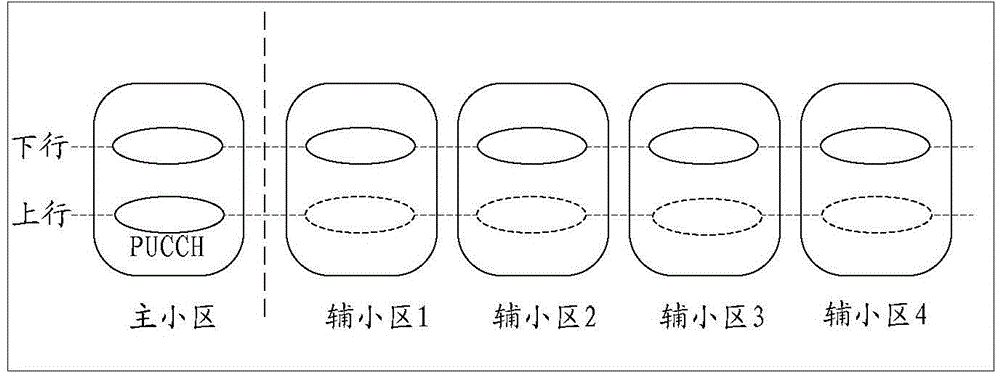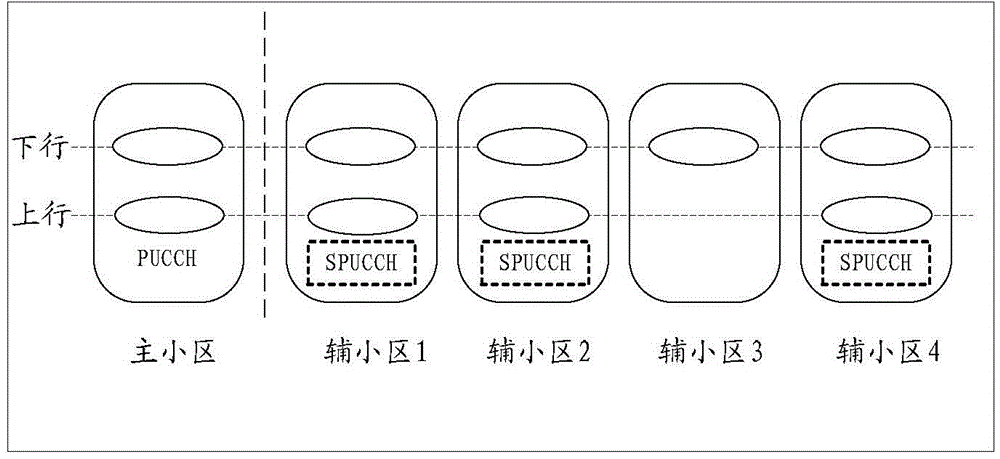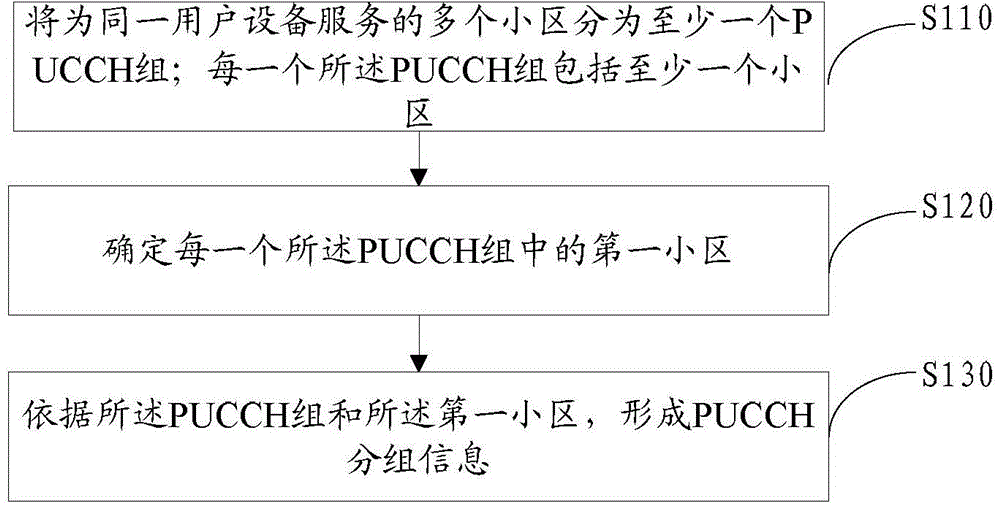Cell grouping method, synchronous failure treatment method, base station and user equipment
A technology for user equipment and cell grouping, which is applied in the field of communication and can solve problems such as synchronization failure processing
- Summary
- Abstract
- Description
- Claims
- Application Information
AI Technical Summary
Problems solved by technology
Method used
Image
Examples
Embodiment 1
[0113] Such as image 3 As shown, this embodiment provides a cell grouping method, the method comprising:
[0114] Step S110: dividing multiple cells serving the same user equipment into at least one PUCCH group; each of the PUCCH groups includes at least one cell;
[0115] Step S120: Determine a first cell in each of the PUCCH groups; the first cell is a cell configured with a PUCCH, and the PUCCH is used to transmit uplink control information of each cell in the PUCCH group. The cell configured with PUCCH is configured with PUCCH resources for the cell; the PUCCH resources can be used to transmit various uplink control information. The uplink control information includes: uplink resource scheduling request, ACK / NACK feedback of downlink data and downlink channel state information. The downlink channel state information may include: channel quality indication information, precoding matrix indication, rank indication, and the like.
[0116] Step S130: Form PUCCH group infor...
Embodiment 2
[0145] This embodiment provides a synchronization failure processing method, the method comprising:
[0146]When the user equipment determines that synchronization failure occurs with the timing advance group TAG to which the cell serving the user equipment belongs, the preset operation based on the PUCCH group is performed according to the preset strategy; wherein, the PUCCH group is based on receiving PUCCH group information from the base station definite.
[0147] The execution subject of the method described in this embodiment may be a user equipment, specifically, a communication terminal equipment having a communication function such as a mobile phone and a tablet computer.
[0148] In this embodiment, the user equipment will determine the synchronization status between itself and at least some of the serving cells. If it is not synchronized, it is considered that there is a synchronization failure between the user equipment and the corresponding cell; otherwise, the syn...
example 1
[0228] Such as Figure 7 As shown, the serving cells of the user equipment include the primary cell, the secondary cell 1 , the secondary cell 2 , the secondary cell 3 and the secondary cell 4 . The primary cell belongs to TAG_1, the secondary cell 1 belongs to TAG_2, the secondary cell 2 and the secondary cell 3 belong to TAG_3, and the secondary cell 4 belongs to TAG_4. Here TAG-n indicates the nth TAG. Said n is an integer not greater than 4 and not less than 1.
[0229] When cells are grouped to form a PUCCH group, more than 2 PUCCH groups can be configured, and the problem of any PUCCH group or TAG only affects this group, and the transmission of other TAGs is not affected. Such as Figure 7 The PUCCH group shown includes PUCCHG1, PUCCHG2, PUCCHG3, and PUCCHG4.
[0230] The PUCCHG1 only includes the primary cell, and TAG_1 of the TAG where the primary cell is located. When the TAT1 of the TAG1 where the primary cell is located expires, corresponding processing for syn...
PUM
 Login to View More
Login to View More Abstract
Description
Claims
Application Information
 Login to View More
Login to View More - R&D
- Intellectual Property
- Life Sciences
- Materials
- Tech Scout
- Unparalleled Data Quality
- Higher Quality Content
- 60% Fewer Hallucinations
Browse by: Latest US Patents, China's latest patents, Technical Efficacy Thesaurus, Application Domain, Technology Topic, Popular Technical Reports.
© 2025 PatSnap. All rights reserved.Legal|Privacy policy|Modern Slavery Act Transparency Statement|Sitemap|About US| Contact US: help@patsnap.com



